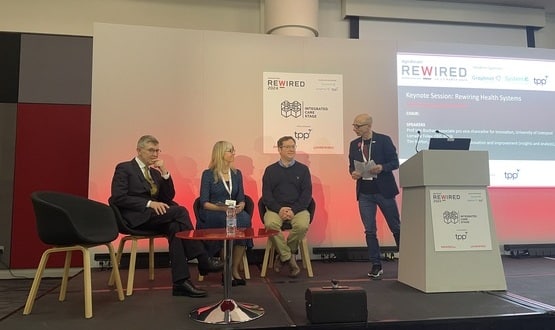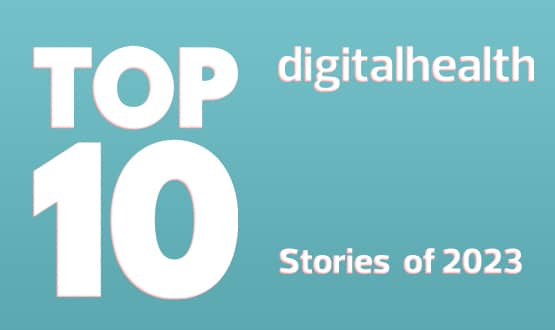Access denied
- 26 February 2013

Build it and they will come? When it comes to patient access to GP records, it feels as though the expectation has been built, and the technology is pretty much in place, but very few people have come – at least yet.
Last week, an exclusive survey for eHealth Insider, conducted by doctors.net.uk, found a considerable lack of enthusiasm among GPs for giving patients online access to their records.
The overwhelming majority of the 1,000 GPs who responded had yet to address the challenge or felt their systems still needed work; while just 4% said they were already doing it.
Just half of those polled felt that records access would be useful; and even fewer agreed with a government deadline to have access in place by 2015.
Ministers have repeatedly promised to give patients access to their GP-held records by this date, and to extend this to other records following a consultation this summer. Yet it seems that patients are hardly knocking the door down, either.
“The appetite of people in the UK for this is pretty miniscule,” says Max Brighton, managing director of GP system supplier INPS.
Building health literacy
Brighton cites statistics from the company’s own symposium on the issue before Christmas, which reported that fewer than 100 practices in the UK have enabled patient access and fewer than 2% of patients in those practices are using the functionality.
These feel like surprising statistics, considering the take up of online services in the UK more generally. For example, figures published by the Organisation for Economic Co-operation and Development last year showed that Britons are the biggest online shoppers in the developed world – ahead of countries including the US, Australia and Germany.
However, Dr Amir Hannan, the GP who is synonymous with record access, and whose Hyde surgery now has more than 2,000 patients accessing their records, believes that those who focus on records access alone are missing the point.
“Everybody can have access to their records? Well, big deal,” he says. Dr Hannan argues that record access only works when it is part of an overall approach to building ‘health literacy’ among patients.
His practice aims to do this through a variety of methods including its website, which contains a wealth of information and resources to enable patients to take charge of their own health.
Dr Hannan says Kaiser Permanente in the US has taken a similar approach on a vastly different scale, investing millions in delivering web services to its patients. As an insurer, it naturally believes that ultimately this will be money well spent.
In the UK, though, the investment involved for individual GPs and for system suppliers can seem questionable; although that 2015 deadline may be forcing the issue.
Meeting a deadline
Dr Mike Robinson, medical director of INPS, says its Vision system offers repeat prescribing and appointment booking online, which have been very popular. It will add test results this year.
Functionality planned for next year will enable patients to view a summary record, although Dr Robinson says that has been little demand for it from GPs.
He adds: “You do question the viability of such efforts when uptake is very low; but the political agenda must sometimes come into our thinking.”
Dr Robinson says INPS’s approach – giving patients a summary view rather than access to their full record – has been guided by a desire to make sure that patients are protected in regard to issues such as third party information.
It also takes into account that records have been built with clinicians not patients in mind. He adds: “GPs are concerned about the patients as much as we are. It’s not just about enabling the functionality.”
TPP says patients with SystmOne records can also access their records online following a pilot project in August 2012. The functionality is controlled by GP practices who can enable patients to see their entire GP record or specific subsets.
Fellow GP IT system supplier EMIS has led the way on online patient functionality with transactional services available since 2004 through EMIS Access.
Neil Laycock, managing director of EMIS, says the company recently made significant investment in the service, rebranding it as Patient Access and adding a range of additional web services for patients.
It is seeing steady growth in use of functionality such as repeat prescribing and appointment booking, with almost 400,000 patients using Patient Access in January this year. But record access remains a minority interest.
The company says it recognises the government’s commitment to record access, but is clearly not keen to get drawn into a debate about the pros and cons of doing this. “Our job is to make sure our system is ready if and when GPs want to switch it on,” Laycock says:
Cold, hard cash
A further debate is beginning about how best to encourage GPs to flick the switch. The government looks like it is going for a straightforward financial incentive in the form of a directed enhanced service for online patient access.
A DES on online services is due to be included in the new contract from April, starting with payments for services such as repeat prescribing requests.
This means there is the potential to add online records access later, perhaps in 2014. Money to fund this service will be taken out of the Quality and Outcomes Framework.
Dr Brian Fisher, a Lewisham GP and another record access pioneer, is not impressed with this approach; which he describes as “bullying tactics”.
He has developed his own model for enabling patient record access and is currently running the myRecord project with the Health Foundation. This has succeeded in convincing two-thirds of practices in Lewisham to offer records access.
The myRecord project employs a records access facilitator who goes into GP practices and explores with them the risks and benefits of record access.
They provide support on switching on access, recruiting patients and maximising the benefits for themselves and their patients.
Dr Fisher says: “In terms of recruiting patients the key thing is that clinicians recommend it. If a clinician says to a patient with a long term condition ‘record access would make life a little bit easier and a little bit safer for you’ they are much more likely to sign-on.”
Like Dr Fisher, Dr Hannan sees records access as a tool that leads to changed relationships with clinicians, enables patients to think differently about their health, and look after themselves better.
However, he admits that convincing GPs to take up record access remains “incredibly difficult” – although he believes the government target of record access by 2015 will help.
He adds: “It’s already made a different in liberating all sorts of people and encouraging them to think that this is worth investing in.”
Not yet a priority
The government’s 2015 commitment is now enshrined in the NHS information strategy, ‘The Power of Information’, the mandate to the NHS Commissioning Board, and the NHS CB’s planning guidance to the NHS.
To move things along, it has signed up the Royal College of GPs to lead a programme to support online access.
The RCGP has been working with patient groups and professional organisations to outline what training education and support practices will need. Sometime in March, the college will be announcing the results of its first tranche of work on this topic.
The BMA’s GP Committee has been working with the RCGP on its review and says it remains convinced that a lot of work needs to be done before patient record access becomes increasingly available.
Dr Richard Vautrey, deputy chairman of the GPC, says: “We need the government to listen to the profession as whole and not just people who are enthusiastic about this.”
Like others he claims that safeguards are needed and claims that patients are not really interested in looking at their own record, adding: “Most patients have better things to do with their time.”
It’s a sentiment echoed by one GP commenter on last week’s survey, who listed at least ten pressing concerns that come ahead of patient access to records for him.
These include QoF changes, consent to record sharing with other healthcare organisations, electronic transfer of prescriptions and the introduction of clinical commissioning groups – and, indeed, a whole new commissioning structure – in April. Getting patient access nearer the top of that list is still work in progress.




